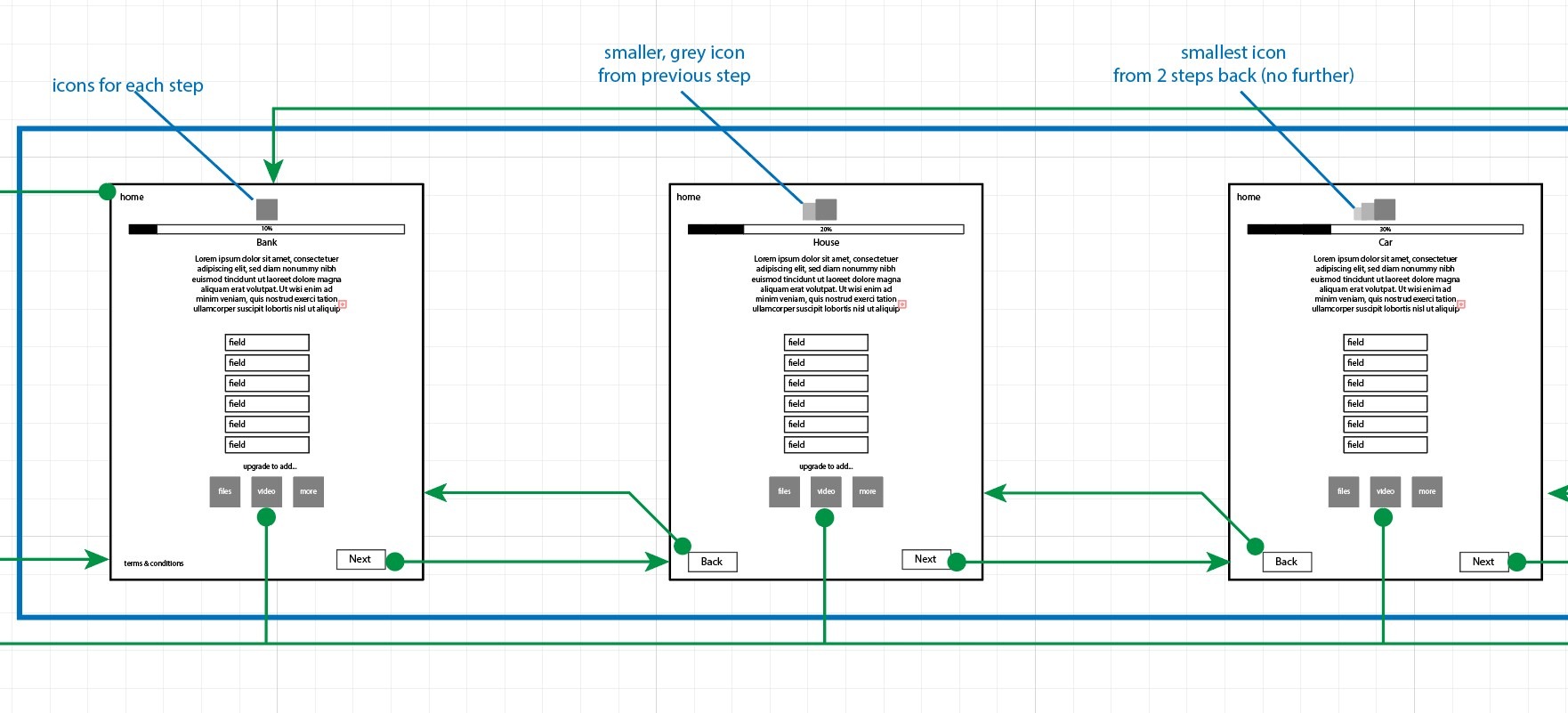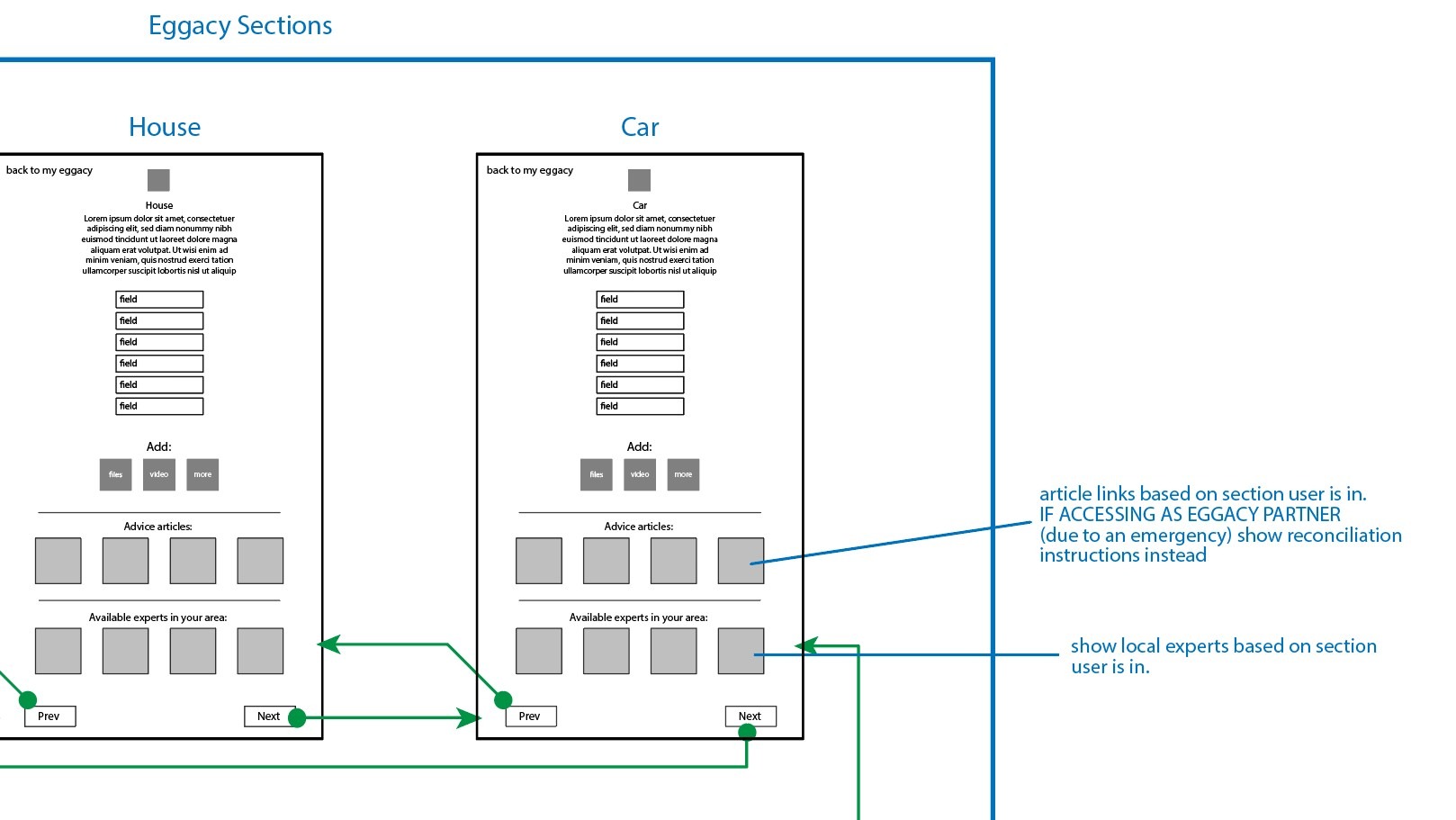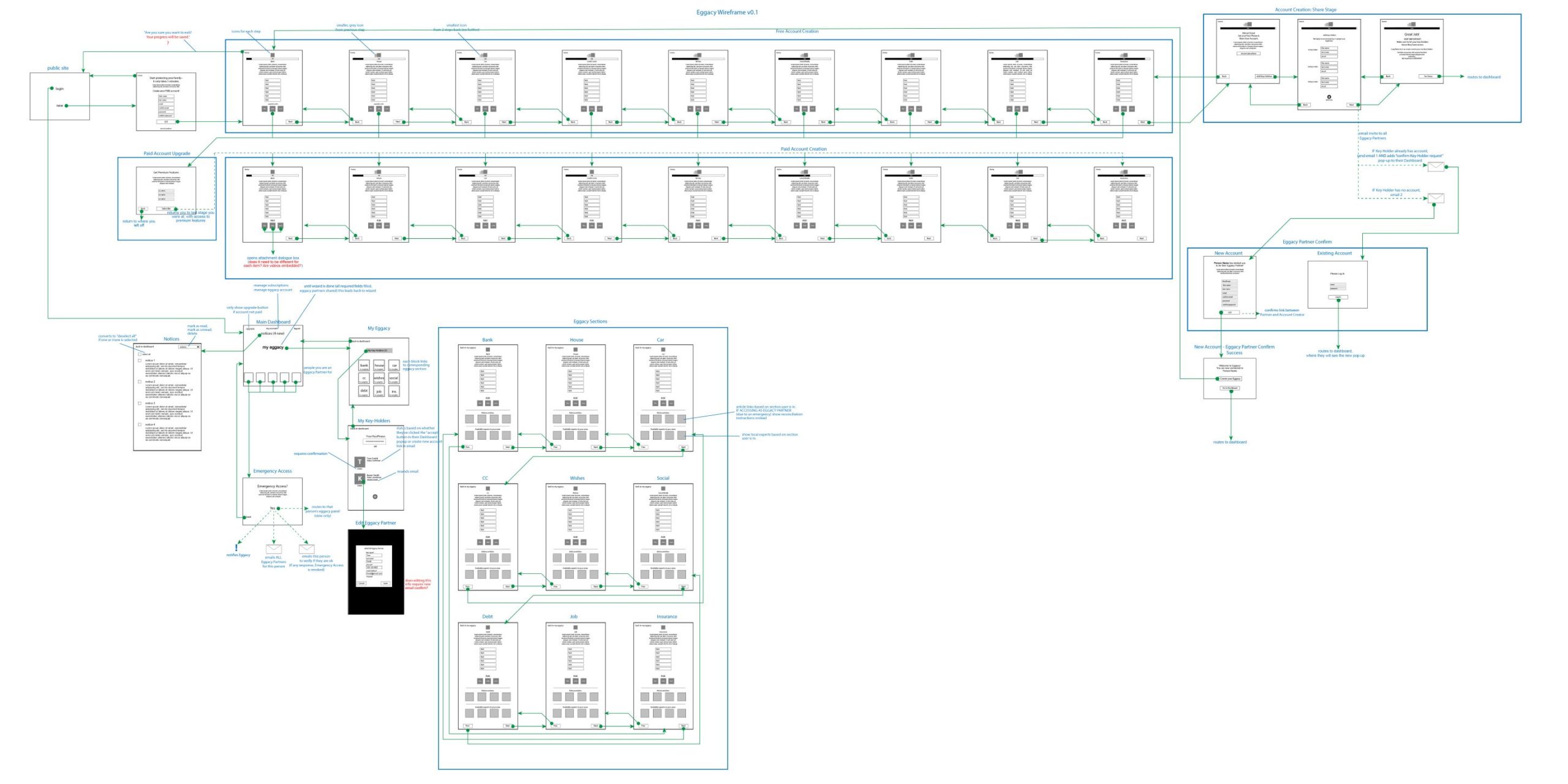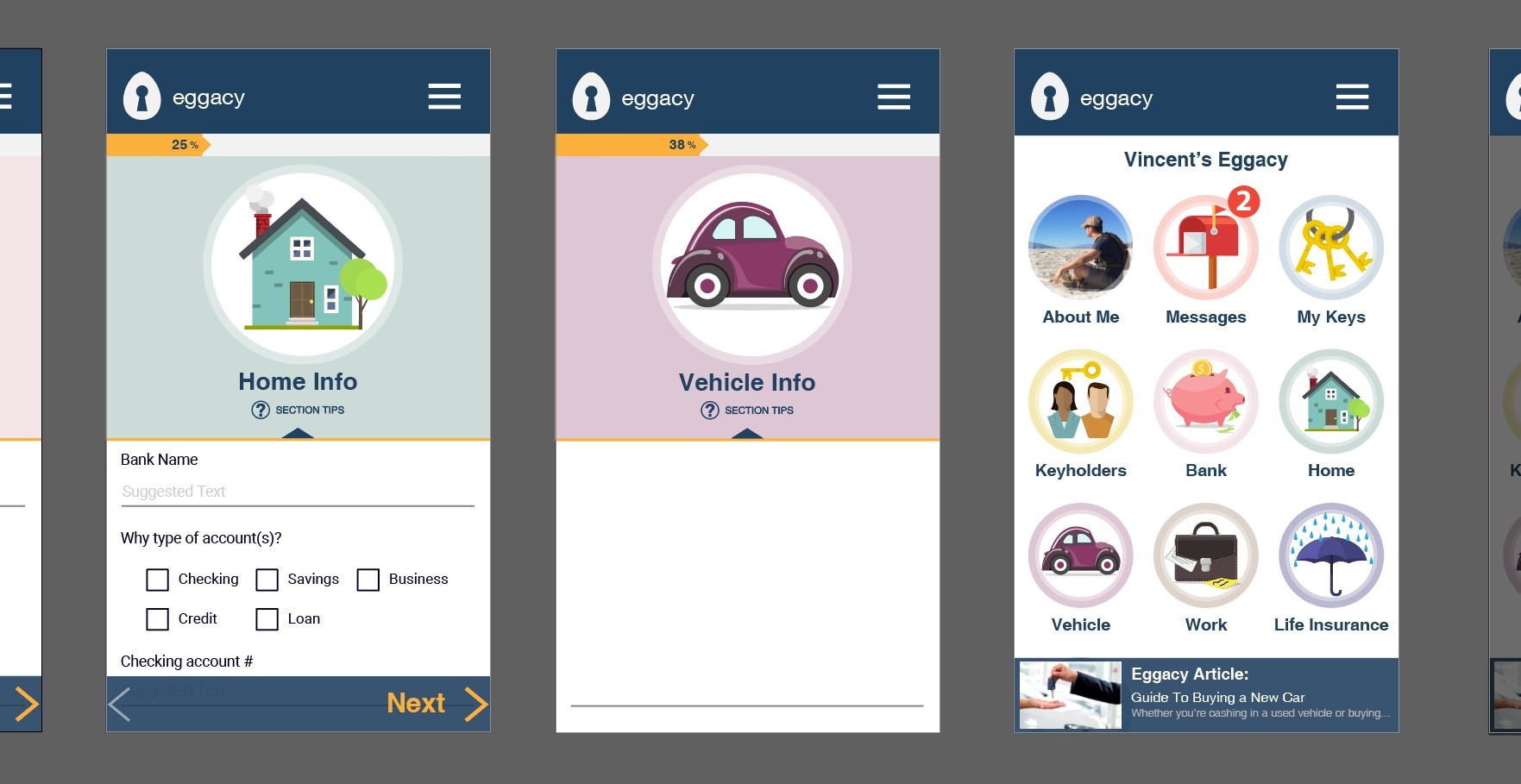
EGGACY
My Role
ui – ux – brand – illustration – video
Tools
illustrator – premiere – XD
Summary:
Eggacy aims to help users and their loved ones manage their estate in the event of death.
The Challenge
Less than half of Americans have a will¹ directing how their money and belongings should be treated after their death. That percentage shrinks drastically among younger age brackets. As a result, families suffer from overwhelm and confusion in addition to grief.
Project Goal
Eggacy aims to ease a family’s burden when someone dies by making sure they have access to everything important in their loved one’s life.

Eggacy is a startup currently in the testing phase of their app and seeking first-round venture capital funding.
Estate planning for everyone.
Whether you’re a twenty-something with only a few hundred bucks to your name, or a multi-millionaire with seven properties, someone will have to deal with everything you leave behind when you die.
MY ROLE
I worked with Eggacy’s founders and early investors to identify the needs of the target audience, develop their general concepts into interaction wireframes and finalized UI layouts, designed and illustrated the visual style for the brand, and storyboarded and animated a short video explaining Eggacy’s value to customers and future stakeholders.
THE CHALLENGE
Make estate planning accessible to people of all ages and income levels.
In particular, Eggacy wanted to target those groups least likely to have a will: people ages 18 – 49.
First we needed to understand what was stopping this group from planning their estate. After I joined their team, Eggacy’s researcher provided me with the following insights they had learned through a short series of user interviews:

REASONS POTENTIAL USERS DIDN’T HAVE ESTATE PLANNING
1.
“I don’t have time”
2.
“I don’t know how”
3.
“I don’t have enough”
4.
“It’s too expensive”
SOLVING PROBLEMS 1 & 2:
The five-minute rule
fīv min-it rool
noun
Every time they use the app, the user must feel they have completed an estate-planning milestone in less than five minutes.
We built a rapid launch wizard: a first-time user flow that gets them engaged and ‘finished’ with zero overwhelm and no guilt for skipping info.
I designed a setup wizard that would allow users to fill in as much or as little data as they wanted; its sole purpose was to show them how easy it was to get going, and teach them that they could come back and add more info at any time, just a few minutes a day. From start to finish, assuming the user entered the minimum required data, the wizard took less than five minutes to complete. We considered periodically reminding the user that for important eggs in their basket, they can upgrade to add files.
How else can we help the user and their family as they gather information?
As we tested the app internally, we quickly realized that when logging in after using the startup wizard, the mere thought of how much information we could enter felt overwhelming. We experimented with the idea of allowing contributing experts to submit help blogs with ideas on what information they might need in their estate.
This has the potential to simultaneously offer a new value to the user, and a attract a new set of users; experts looking to reach potential clients.
SOLVING PROBLEM 3:
Get users to think about leaving behind their “mess,” not their money.


“Even sexy people die.”
How do you get a customer to think about their own impending death without freaking them out?
Solving for that question was one of Eggacy’s key branding challenges. We came up with creative, non-threatening imagery and slogans to engage the idea of a user’s death and the urgency of planning for one’s family, regardless of how much money they’d be leaving behind. Their money had to merely be one thing in a long list of other things.
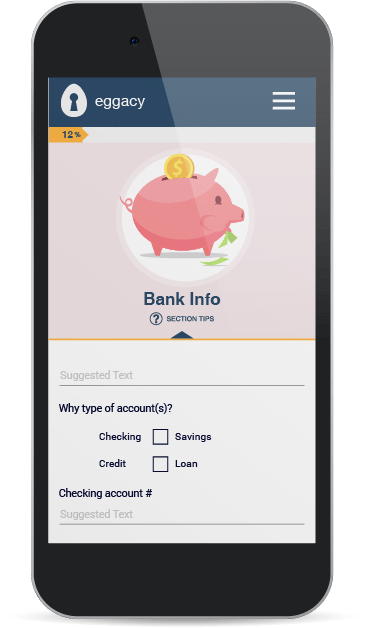
Flash – era material design.
Accessibility was top of mind: the iconography and buttons had to be easy to see and use for older people who might not be as tech literate. But we also wanted it to feel pleasantly familiar to what we anticipated would be its most likely users: older millenials and younger gen xers.
Familiarity builds trust. I created the illustrations after I spent a week using the internet archive to look at corporate websites as they appeared in the late 90s and early 2000s, when today’s 30 – 40-somethings were first getting online.

Eggacy also needed a visual elevator pitch to explain its value to new users and potential investors. I wrote, storyboarded and produced a 1-minute video that explained Eggacy’s purpose, value, and the key-sharing system, using the assets we were developing for the prototype.

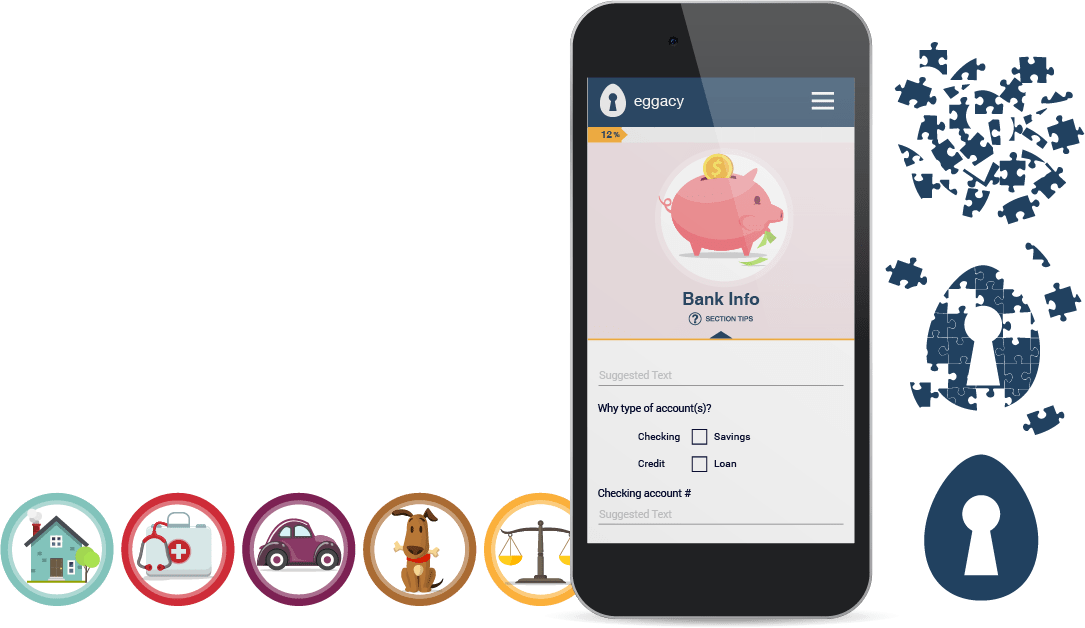
SOLVING PROBLEM 4:
Eggacy must be free, and must be continue to be useful even if the user never upgrades.
The (accurate) perception is that estate planning is often expensive, both in terms of time and money. Lawyers, notary fees, bank visits, drafting and reviewing contracts…
Our target users already felt like they didn’t have enough money to justify estate planning, and being asked to do one more thing in their life was overwhelming, so we couldn’t risk losing them by asking for a lot of time or money up front. Eggacy’s functionality includes a file-sharing system that is upgrade-only; attaching more than one document to a particular “egg” in the user’s basket means paying $5 a month.
We wanted Eggacy to generate revenue, but we also had to make absolutely sure that it would be genuinely useful to someone even if they didn’t pay for it. Our whole team spent time with the app at the free level, seeing how much info we could safely store, and triggering our fake “deaths” in the app to make sure that a family getting inside for the first time wasn’t overwhelmed.
So how will it make money?
By design, Eggacy’s key-sharing system encourages users to onboard their own network. Each onboarded user is then also prompted to use Eggacy themselves and, in turn, onboard their network as well. Focusing on network growth versus up-front subscriptions is designed to allow Eggacy to build a huge user base of active users to whom we can promote to upgrade for expanded file-sharing. It is also meant to form a potential pool of users that can be advertised to with high-quality, Eggacy-approved useful native content from expert contributors.

